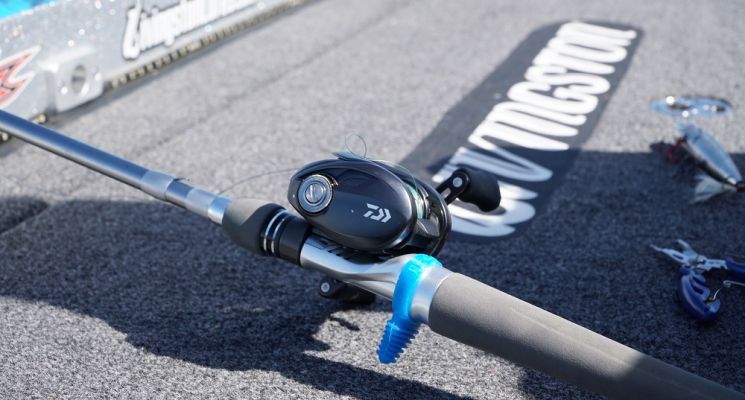Catching a fish with topwater lures is one of the most exciting ways to spend a day on the water. The excitement from the blowup is something that keeps anglers coming back for more, but it can also lead to frustration with lost fish and missed hooksets.
There are four key things that Randy Howell lives by when topwater fishing to get more bites, hook more fish, and land a better percentage of them.
Bait Color
The topic of topwater colors is up for debate. Some anglers go for ultra-realistic colors, while others say color doesn’t matter as fish only get a quick look at the underside of the lure.
“A lot of colors look really nice and they are designed more to catch fisherman than fish,” said Howell. “That doesn’t stop me from getting all of the colors out there anyways. But, I do have three key colors that I rotate through most of the time.”
Howell is somewhere in the middle and keeps his color choices basic with solid colors, something with flash, and something slightly subtle.
“My favorite all around color is chrome with a black back,” he said. “It has nice flashy sides and is great on sunny days. In clear water, you get some extra reflection to draw them from a long way.”
His other two favorites are bone and translucent colors.
“Bone works great in moderate to stained water,” he added. “I also like it on darker days. For those real clear lakes or in tougher fishing, I like to go with a translucent color.”
The Right Gear
Howell has a rod and reel setup for fishing topwater baits that allow for both a long cast and ease of working the bait.
“My favorite reel for topwaters of all kinds is the Tatula Elite long cast in the 8.1:1 gear ratio,” he said. “That’s the same reel I use for everything from frogs to ploppers and walking baits. Most reels that are that fast do not have enough torque, but we worked hard to have both the speed and power you need to winch fish in.”
His favorite topwater rod bears his name is part of the Daiwa Tatula Elite lineup of signature series rods. The rod he uses for topwaters also works well for swimbaits and blade jigs, according to Howell. It is a 7’4” medium-heavy with all of the components and features he wanted from a rod.
“It has a shorter handle and that allows you to work the bait closer to your body and get that nice, efficient walking action from your baits,” he said. “I also made sure it was a one-piece handle instead of a split grip so you can make those long bomb casts with two hands much easier. It has a nice tip to work the bait but has enough backbone to lock up and hook fish on the end of a long cast.”
The Case for Braided Line
Instead of using monofilament, Howell strictly uses braided lines for walking topwater baits.
“I rarely lose topwater fish with my setup and braided line is a big part of that,” Howell said. “The braid helps get you longer casts and immediate hookups since it has no stretch.”
His line of choice is 50-pound Daiwa J-Braid Grand in the green color, but he says 55-pound Daiwa Samurai is a similar line that fits his needs.
Retrieves
When working topwater walking baits like Howell’s favorite, the Livingston Lures Walking Boss; cadence is key. Getting into a rhythm allows the bait to move enticingly on the surface.
“A faster reel helps get you in tune with the right cadence right away,” said Howell. “It can be hard to master it when you are first getting started, but having the right gear helps.”
As far as speed of retrieve, Howell likes to mix it up as he goes until he finds the right speed and action the fish prefer.
“In open water, I like to keep it moving and will go pretty quickly,” he said. “Sometimes they want the aggressive and deliberate slashing action and sometimes you have to have a ‘stop and go’ retrieve to get them going.”
When fishing around cover, Howell tries to make contact with it if he can.
“Sometimes you can walk it right up against a bush, tree, or rock wall,” he said. “That will help to draw some fish out of the cover.”
Topwater fishing can be extremely fun or frustrating when missing bites. To increase the number of topwater bass Howell puts in the boat, he has his equipment dialed in perfectly, chooses from a handful of favorite colors, and varies his retrieve until he figures out what the bass want that particular day.






 Advertising
Advertising